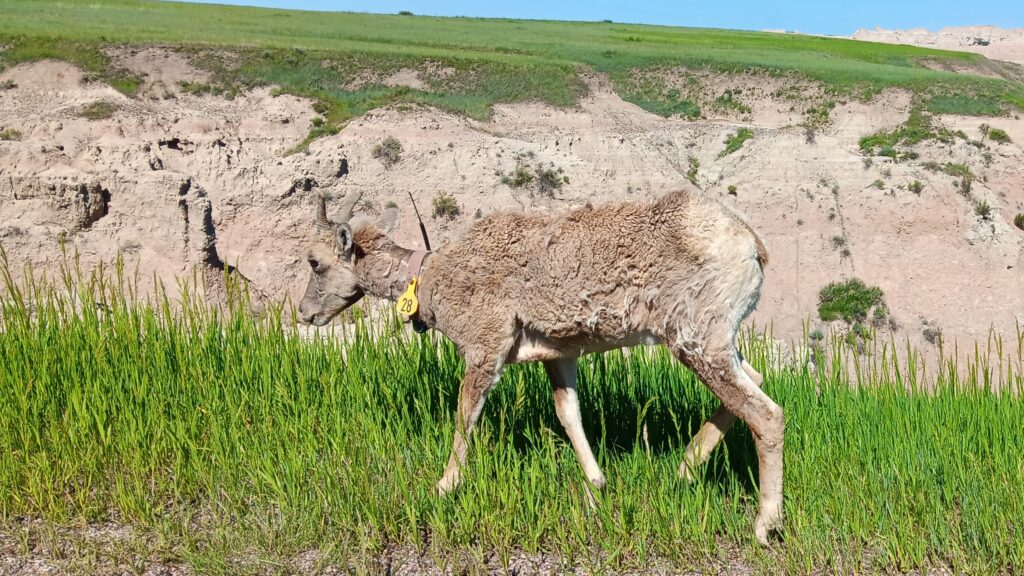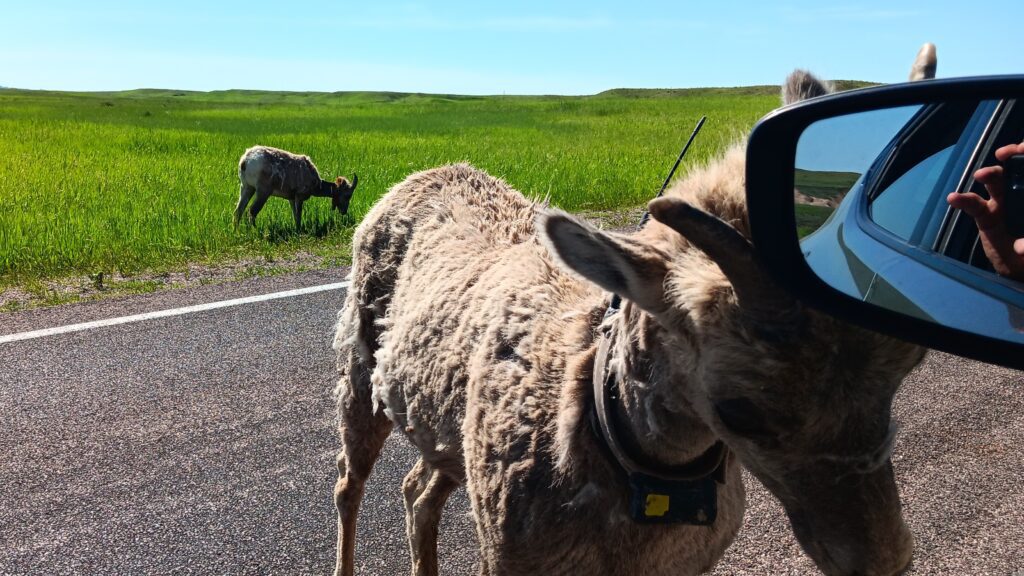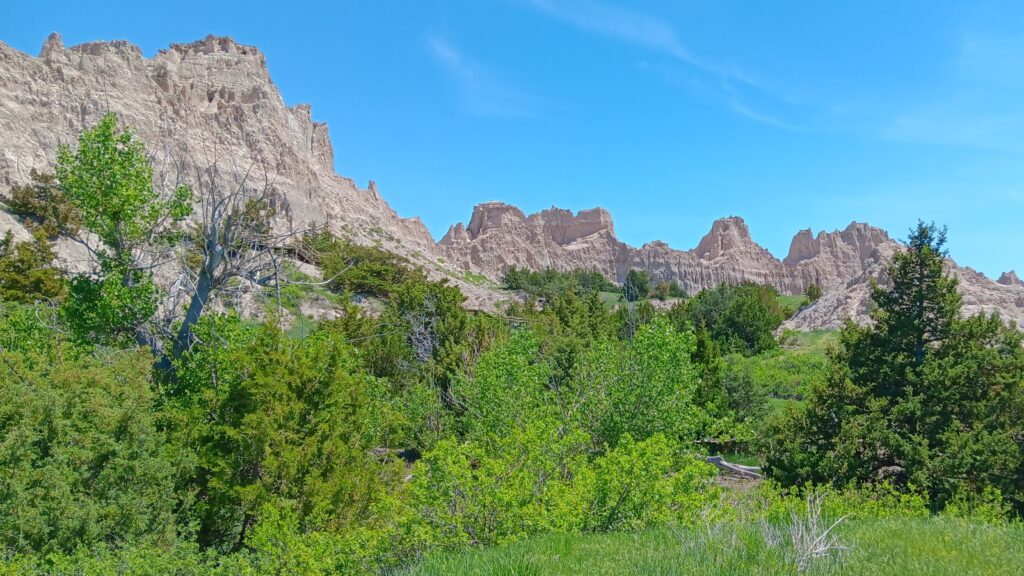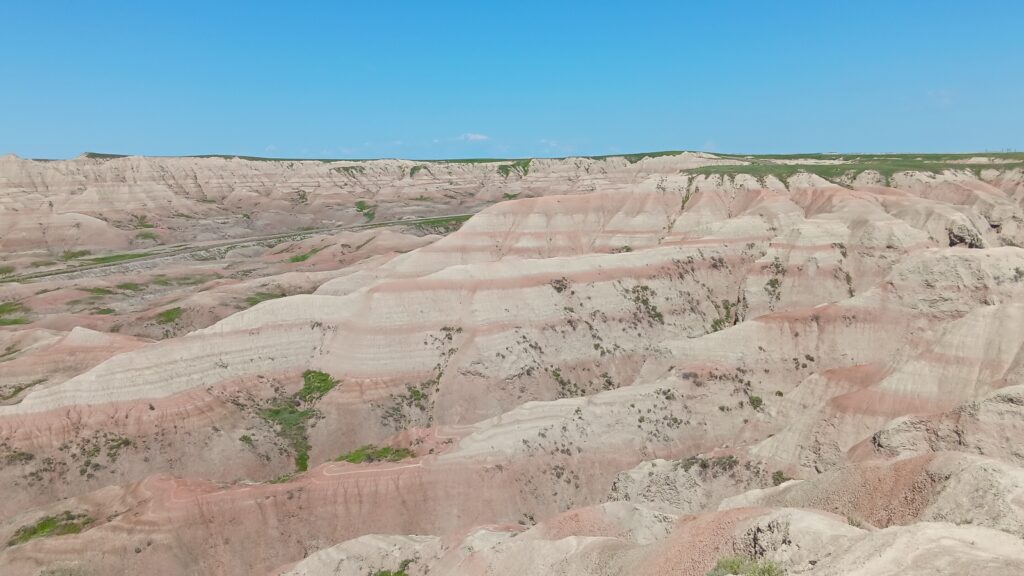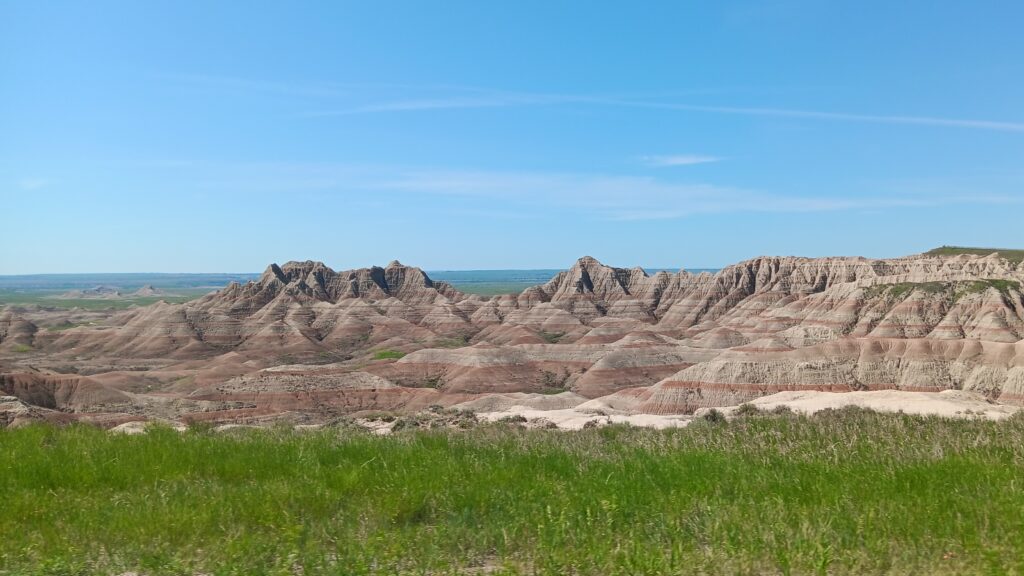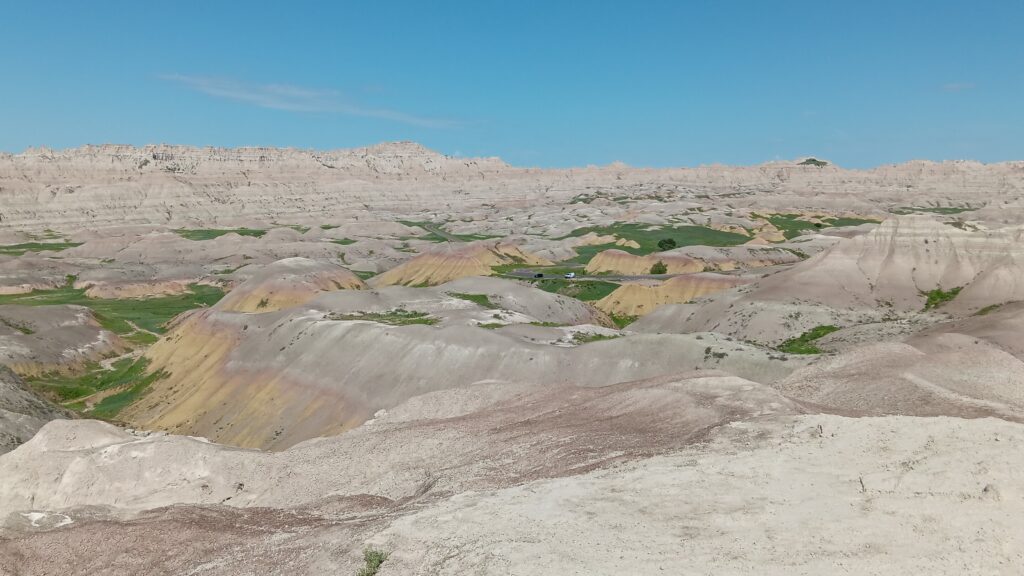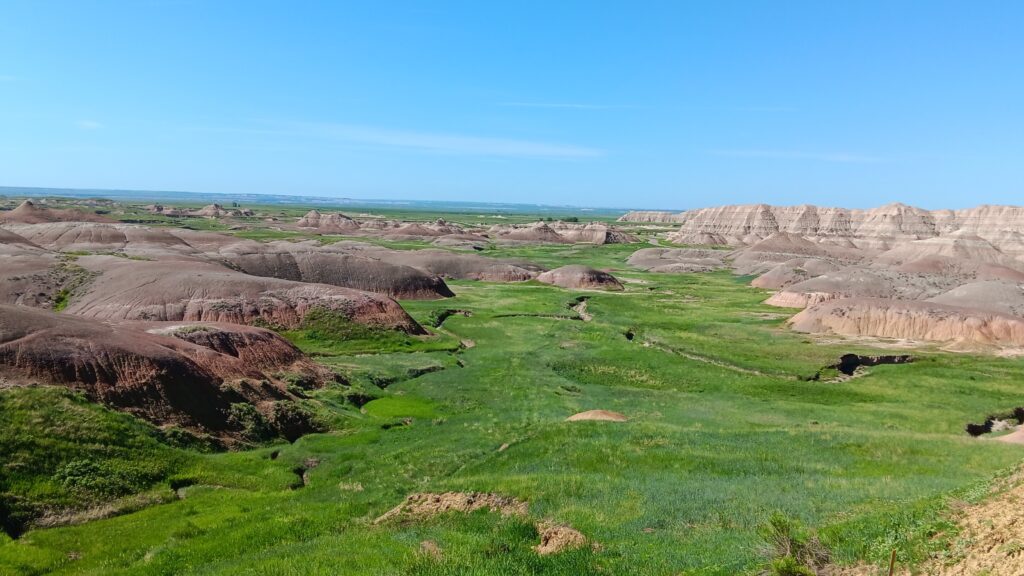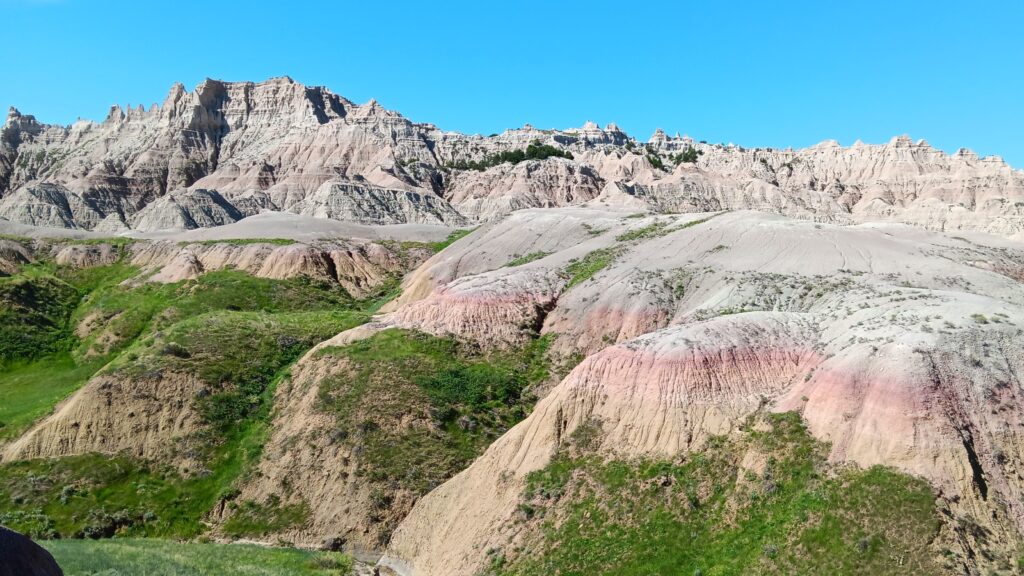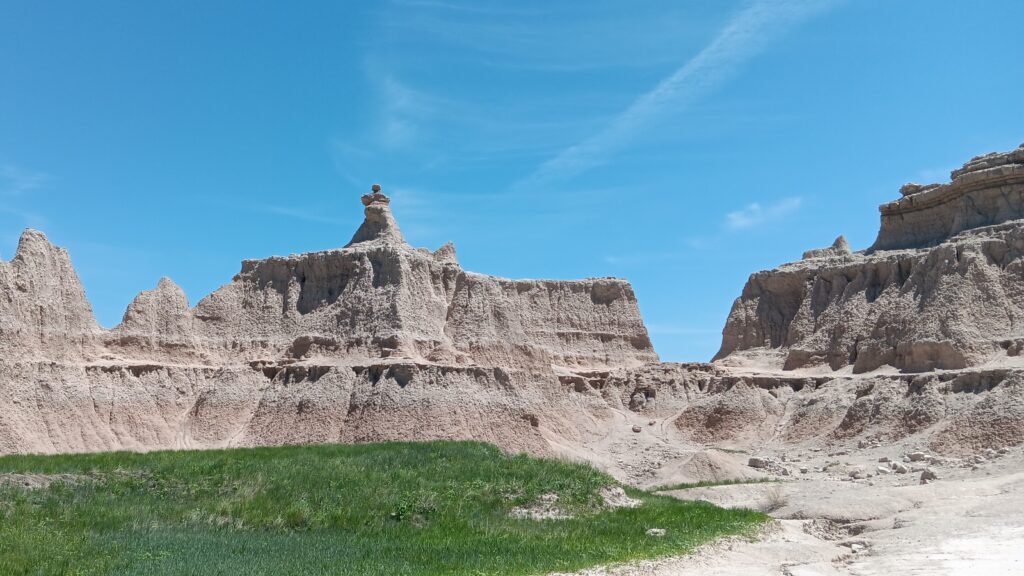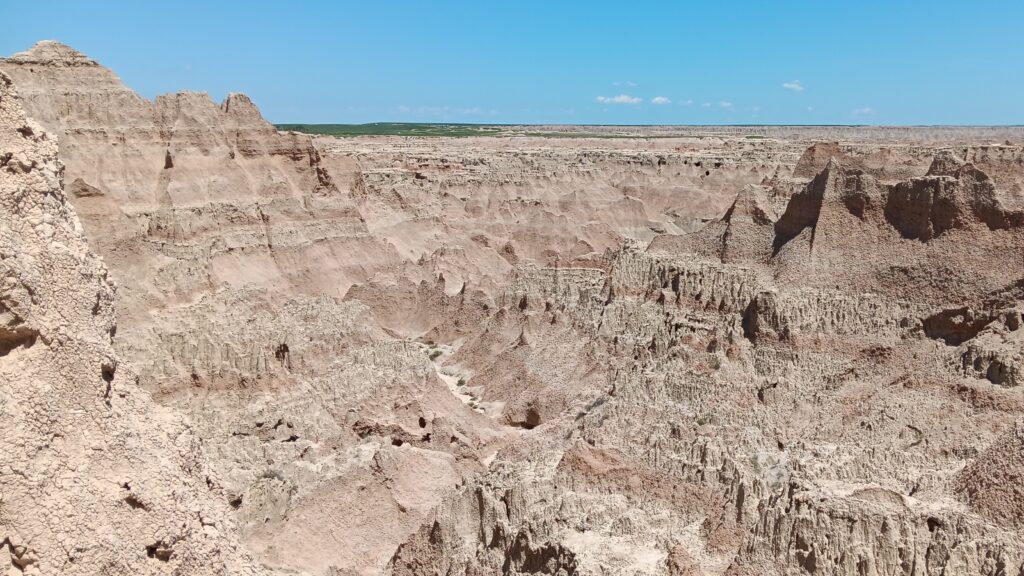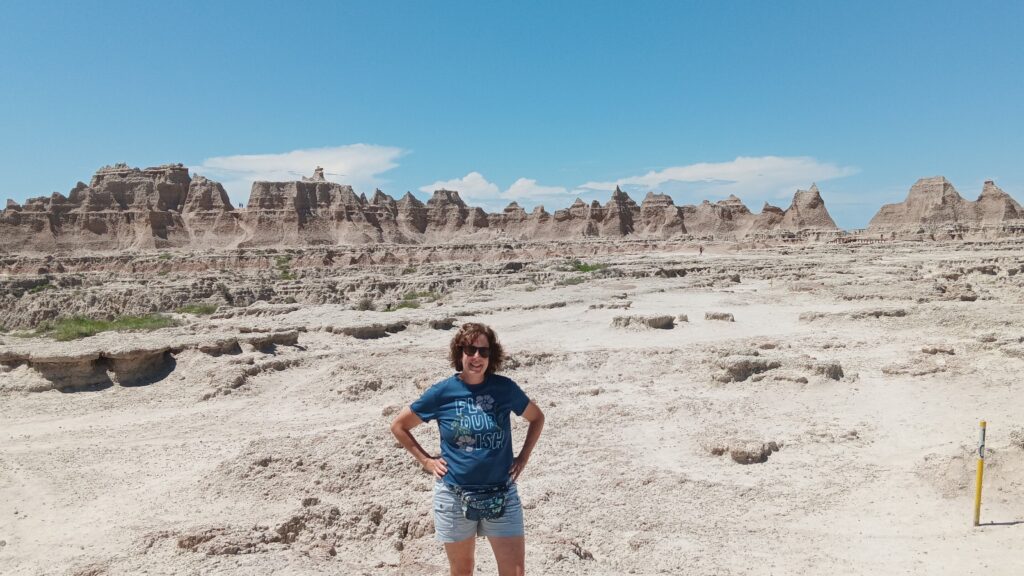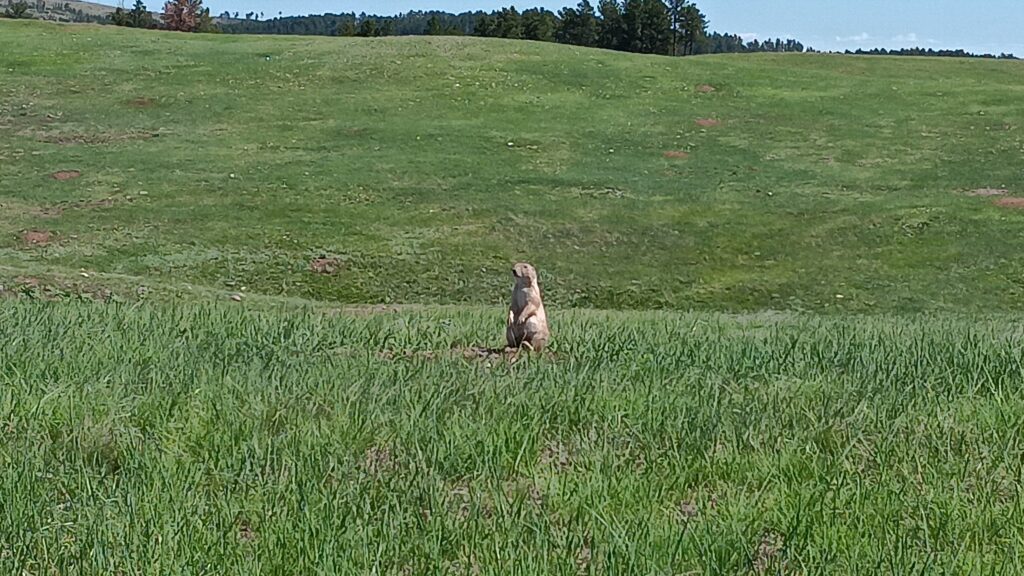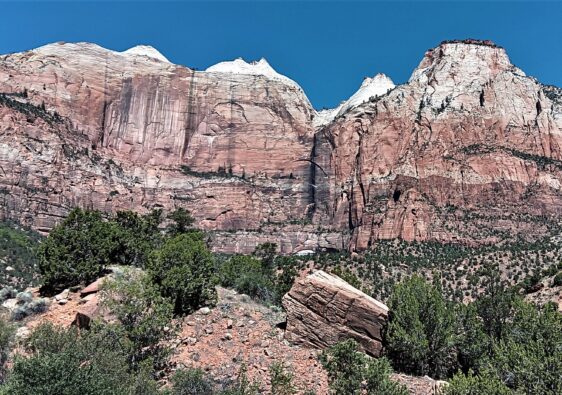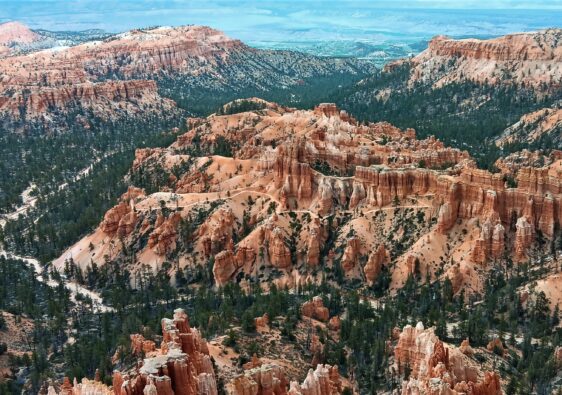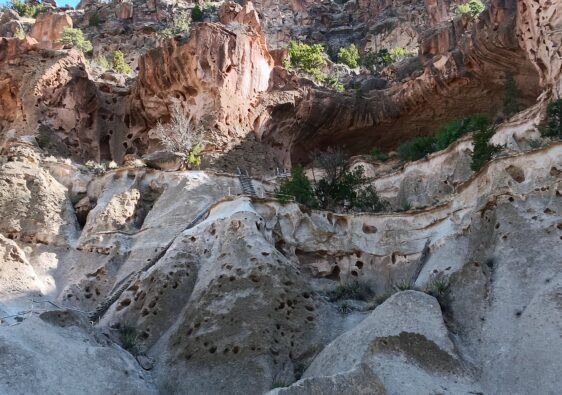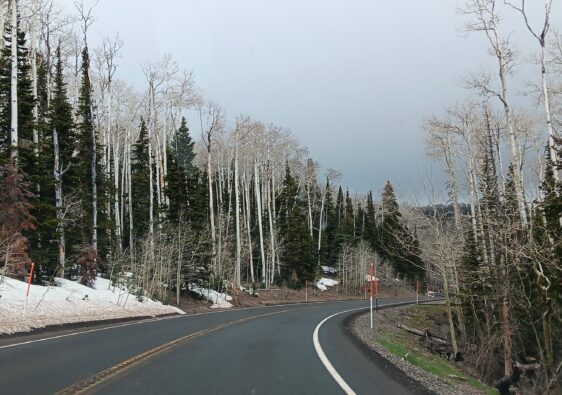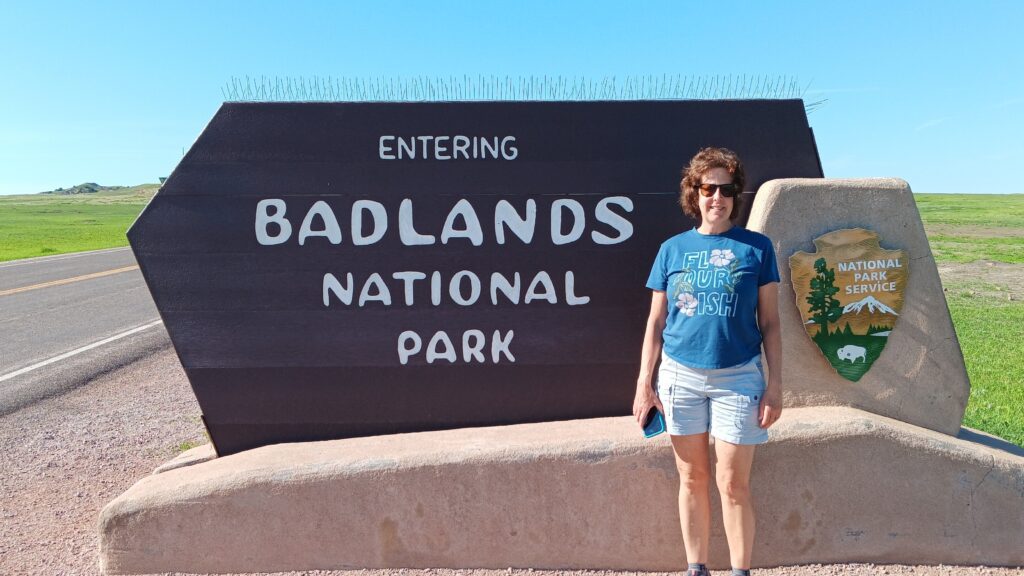

Our final National Park on our Western Adventure was Badlands National Park. We first entered the park to watch the sunset from the Pinnacles Overlook. We got there about one hour before sunset to see the area during the “golden hour”. We got to chat with some very nice people and watched Bighorn Sheep, including lambs, with binoculars on a nearby by ridge while we waited for the main event. The sunset was beautiful and the reverse sunset was really interesting because of a unique funnel shaped cloud that caught the light on one side.
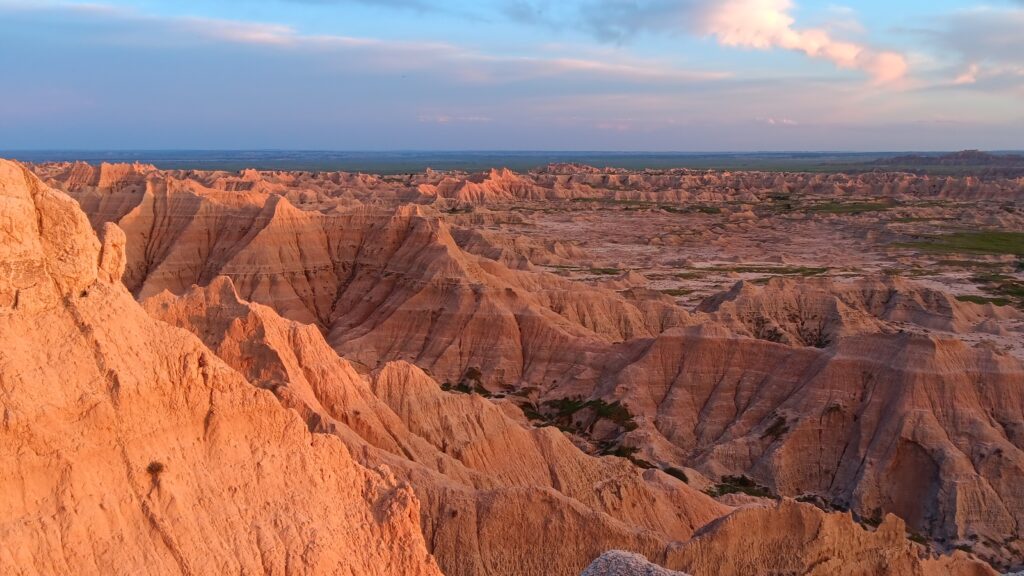

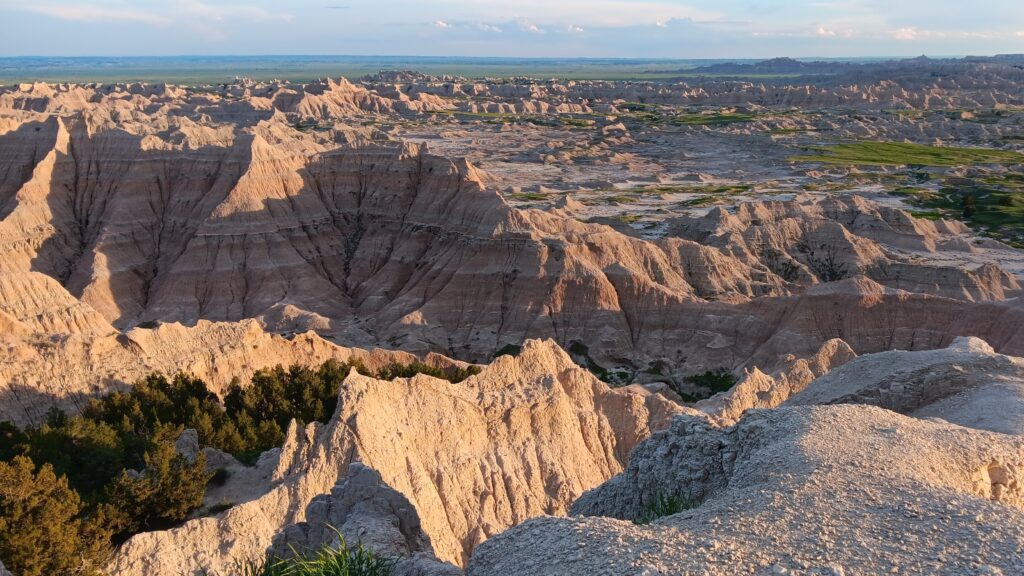

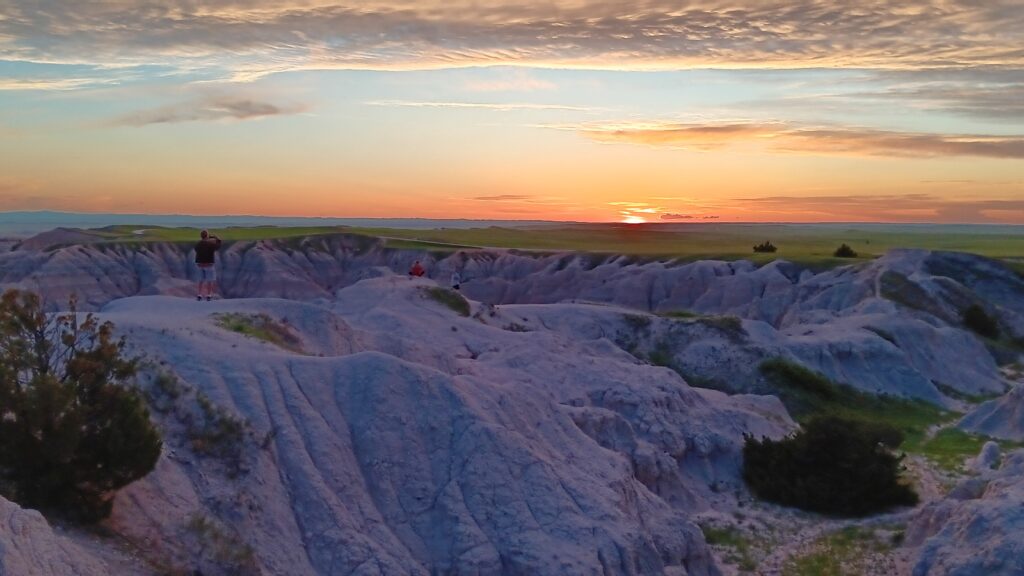

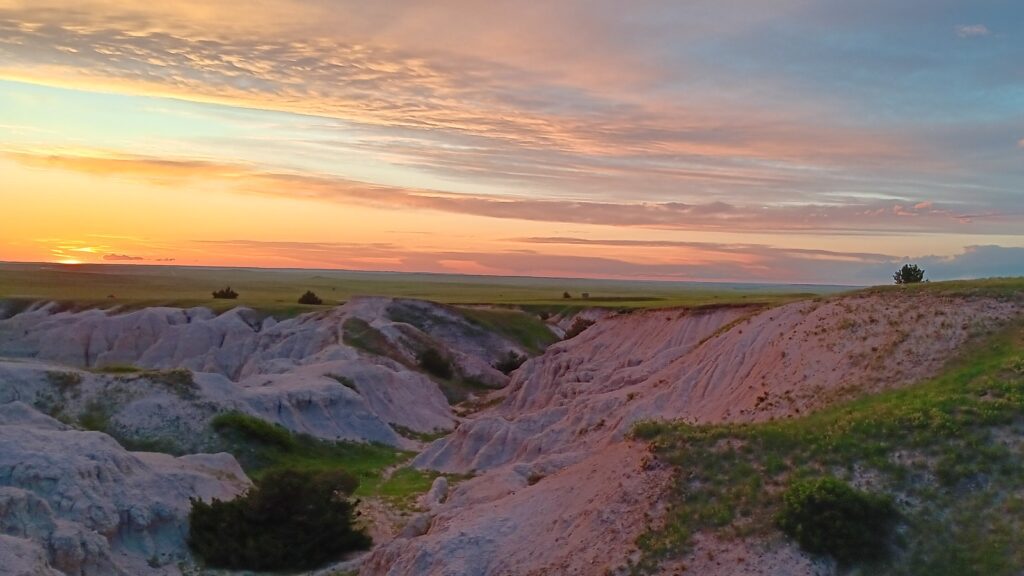

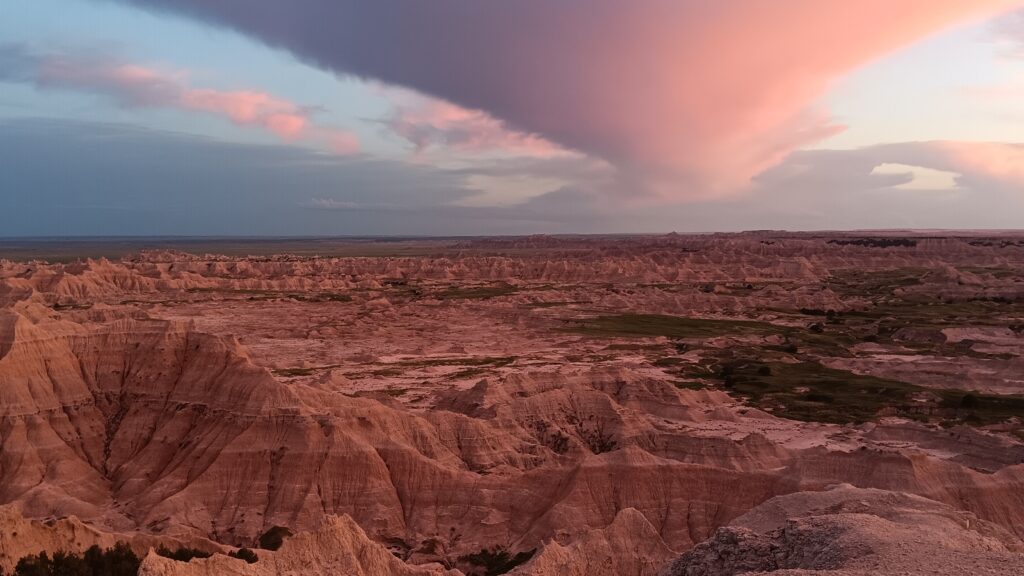

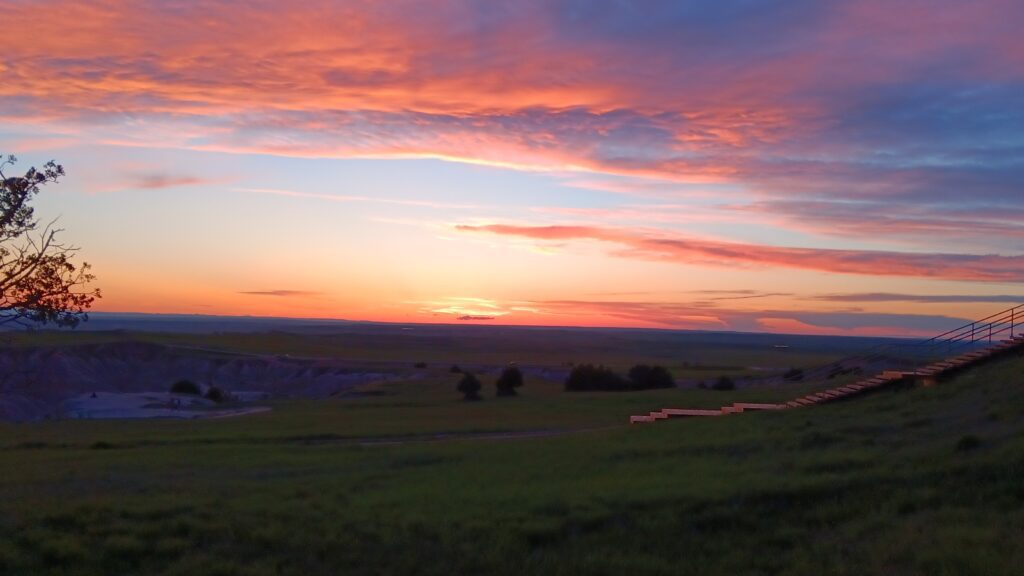

The next morning, we came back and drove the main park road, stopping at all the overlooks. We did a couple of short hikes as well in the scorching heat with no tree cover and discovered, up close, just why this area is called the Badlands.
We met a park employee on our drive who was out looking for the sheep, in particular, the lambs. The sheep population at Badlands was recently decimated, losing 90 percent of the population from a virus called Blue Tongue, which came from domestic sheep. There are four lambs that they are watching. All the adults are tagged with transmitters to help track them.
We actually met a couple of Bighorn Sheep up close, including one friendly fellow who head butterld our mirror, then proceeded to rub his body down the side of the car. He may have been trying to remove his winter overcoat that was still hanging on in places but he soon discovered that a smooth car wasn’t going to help.
Badlands can really be seen in a day or less, depending on how much hiking you do and how much time you spend in the Visitor Center. I’d definitely suggest the Visitor Center because you can learn more about the history of the park and the wildlife.
Badlands has an expansive mixed grass prairie with a managed herd of bison, as well as Bighorn Sheep, Prairie Dogs, and Black-footed Ferrets. There are also rich fossil beds with the remains of ancient horses and rhinoceros. Badlands National Park has much more than meets the eye.
